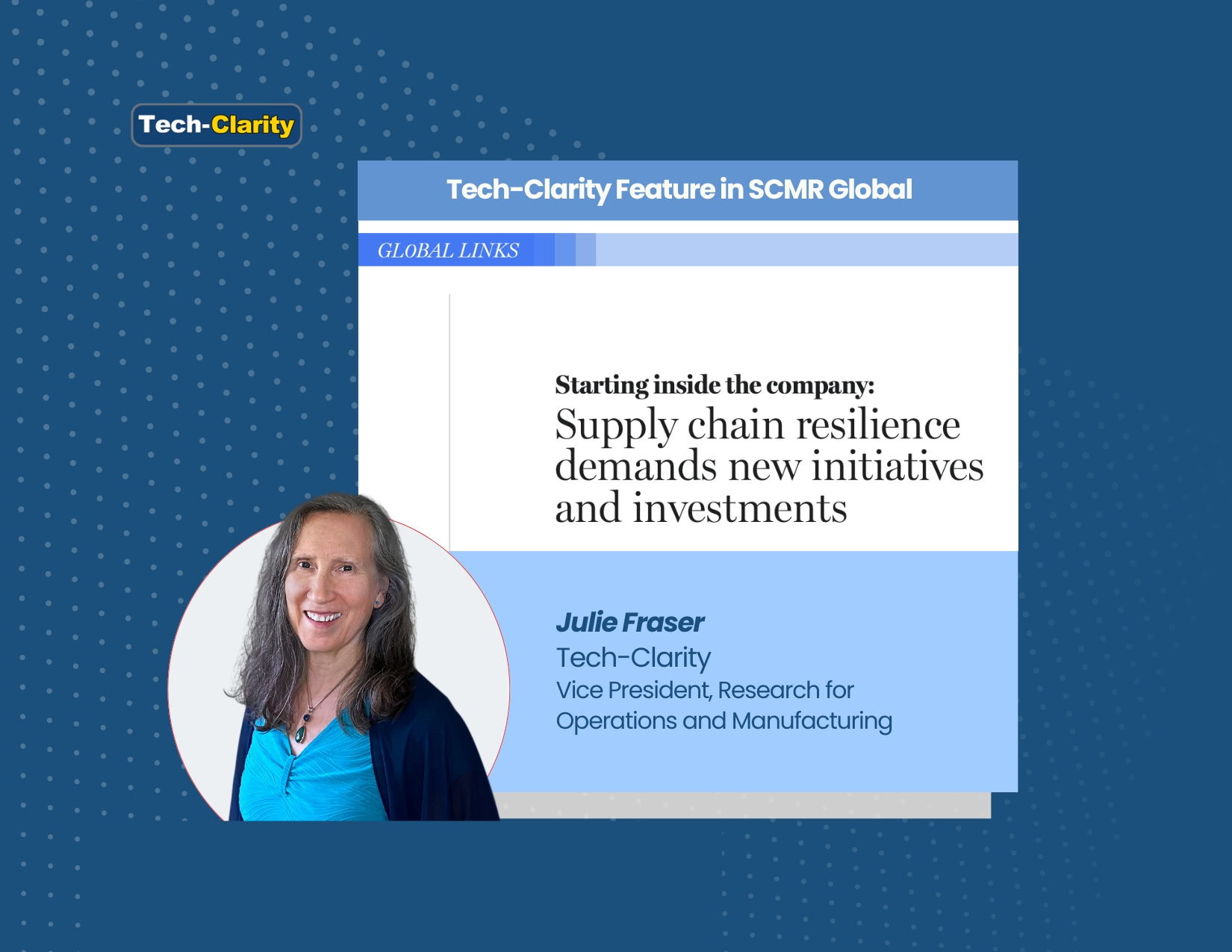 Where’s the best place to start in improving supply chain resilience? Our research shows it’s inside the company. Many companies will need to start new initiatives and make additional investments to ensure their data is flowing for supply chain internal value. Data sharing and collaboration are crucial within supply chain disciplines, but also throughout the company between supply chain and engineering, manufacturing engineering, and the plant floor.
Where’s the best place to start in improving supply chain resilience? Our research shows it’s inside the company. Many companies will need to start new initiatives and make additional investments to ensure their data is flowing for supply chain internal value. Data sharing and collaboration are crucial within supply chain disciplines, but also throughout the company between supply chain and engineering, manufacturing engineering, and the plant floor.
Supply chain and business disruptions are normal and often have severe negative impacts. Some of those factors are outside a company’s control, so most companies are investing in supply chain resilience (70%). Supply chain leaders must invest to tackle the #1 supply chain issue for executives: risk. Most companies need to do more to manage effectively and stay agile in the face of uncertainty, volatility, and ever-changing issues.
So, what to do? Change suppliers? Move production? Pull more production in-house and away from external suppliers? Improve design for supply? All of those might have good results.
Supply Chain resilience inside is the key. Gaining visibility into the product development and manufacturing or “make” areas of the company are crucial differentiators for those companies doing well. How would it be to see changes to products or production capabilities within an hour? Companies that can do that are performing better. Our research suggests that strong data flows across the company are a foundation for supply chain resilience.
Yet for many companies, this will require setting up new initiatives and investing at an enterprise level. Some of the changes might be in employee metrics and incentives to foster collaboration. Another idea is to invest in software that might have agentic AI, improved integration, or multi-tier planning and response capabilities.
Read Julie Fraser’s article in the Global Links section of Supply Chain Management Review that went live in March 2025. The above is a summary, and the full PDF of the article is linked here.
Thanks to Richard Sherman and Supply Chain Management Review for the opportunity to share our views.

